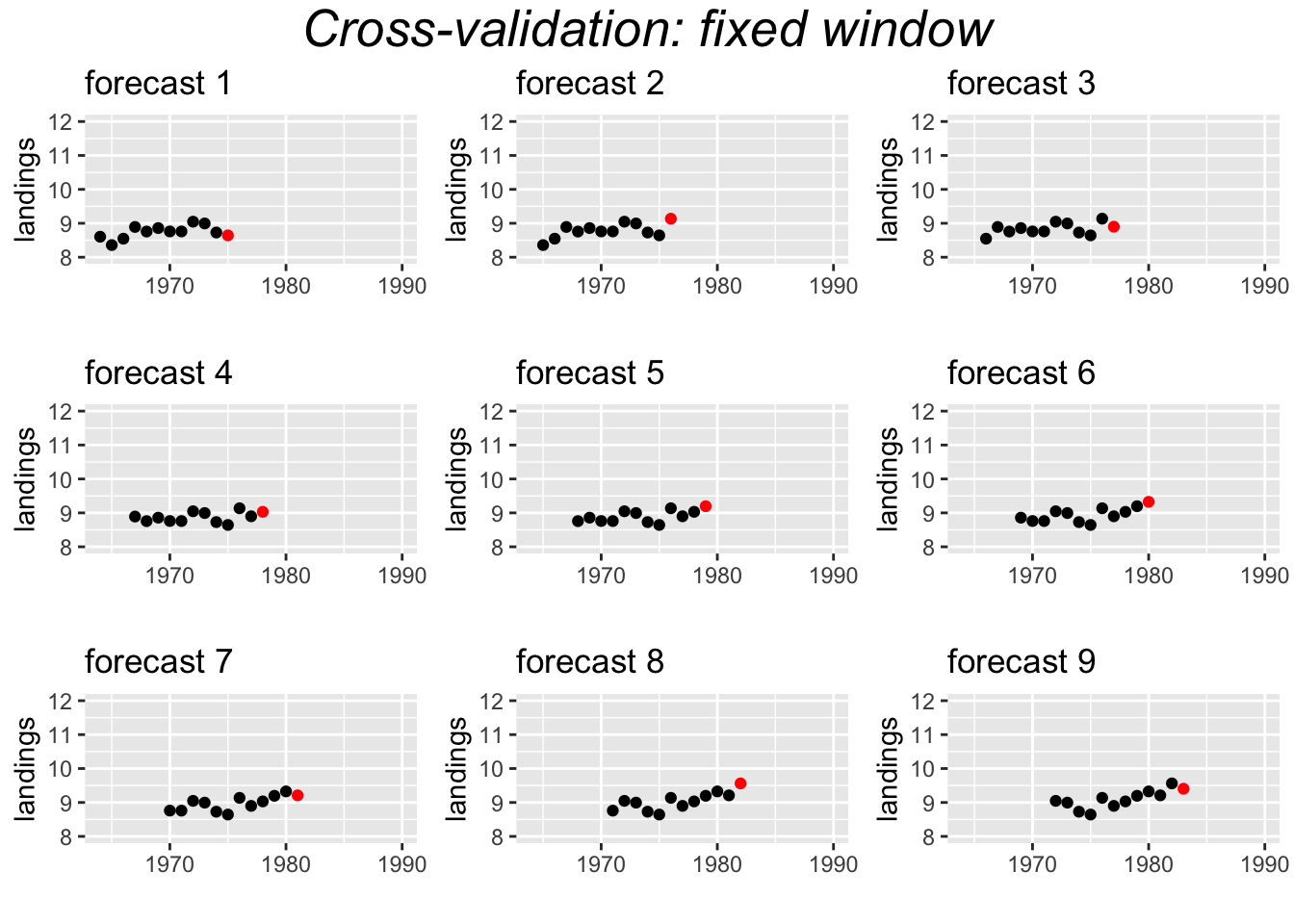5.2 Cross-Validation
An alternate approach to is to use cross-validation. This approach uses windows or shorter segments of the whole time series to make a series of single forecasts. We can use either a variable length or a fixed length window.
5.2.1 Variable window
For the variable length window approach applied to the Anchovy time series, we would fit the model 1964-1973 and forecast 1974, then 1964-1974 and forecast 1975, then 1964-1975 and forecast 1976, and continue up to 1964-1988 and forecast 1989. This would create 16 forecasts which we would compare to the actual landings. The window is ‘variable’ because the length of the time series used for fitting the model, keeps increasing by 1.

5.2.2 Fixed window
Another approach uses a fixed window. For example, a 10-year window.

5.2.3 Cross-validation farther into the future
Sometimes it makes more sense to test the performance for forecasts that are farther in the future. For example, if the data from your catch surveys takes some time to process, then you might need to make forecasts that are farther than 1 year from your last data point.
In that case, there is a gap between your training data and your test data point.
